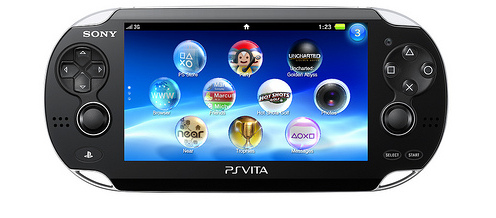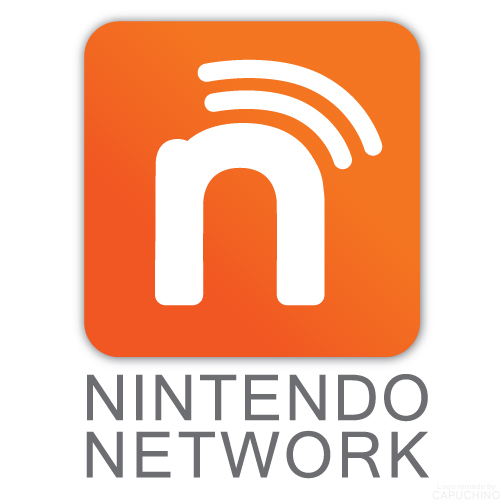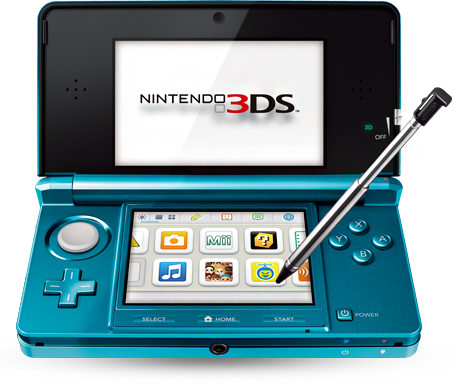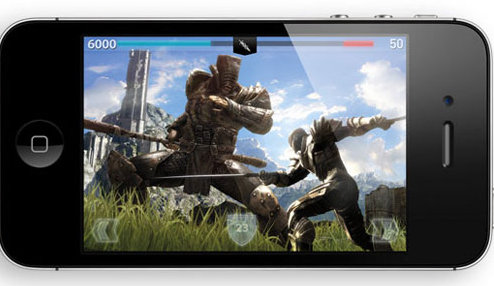This post has not been edited by the GamesBeat staff. Opinions by GamesBeat community writers do not necessarily reflect those of the staff.
Electronic Gaming Monthly once tested the hardiness of a Game Boy Advance by sticking it in a toilet and flushing it. The system came back to life days later and was named Jesus. Handheld systems have come a long way since then, but many gamers and critics claim the traditional tote-wherever-you-go consoles from Nintendo and Sony are dying, and that smartphones will lead the handheld gaming way with no Second Coming in sight for the Japanese developers.
The death of handheld gaming devices like the Nintendo 3DS and PlayStation Vita are greatly exaggerated — even if gamers, media and Forbes.com seem to be declaring the market’s eventual demise and failure.
Death by toilet seems more likely.

Vita sales have been poor in Japan after its first week available.
Warning signs have begun to get more serious as the Vita struggles in the Japanese market — a market that saw the PlayStation Portable enjoy great sales and success largely due to the Monster Hunter series finding a home on the handheld.
Sure, sales for the Vita weren’t very good in Japan after the first week of release, but the Nintendo 3DS has done well despite its initial troubles and subsequent price drop on Aug. 12 of 2011 in the U.S.
Are they perfect starts for the gaming hardware giants? No. But that doesn’t mean they won’t learn from their mistakes and improve upon old business models that no longer work.
We’ve already seen this with Nintendo’s greater commitment to downloadable games via the eShop, and Sony has gone one step further by offering lower prices on games bought via digital distribution for the Vita. Some developers are following suit with Sony’s cheaper incentive.
The two big handheld developers are going to adapt — or they’re going to offer something unique enough that it can’t be emulated or done on smartphones. This can be anything from 3D displays, or other things such as better controls with analog nubs.
As gamers we’re quick to judge our developers; we have to realize that they aren’t totally ignorant to the changing landscape of the industry…even if Nintendo president Satoru Iwata said in a keynote at the Game Developers Conference last year that “the digital distribution revolution could very easily depreciate their (video games) value, which might make all of us have a hard time.”
Nintendo is getting with the times in terms of downloadable games and content via the recently announced Nintendo Network for 3DS and the soon-to-be-released Nintendo Wii U console.

Offering a worthwhile downloadable service is only one step to prosperity.
Pricing for games is going to have to be changed — especially in light of poor sales. People are moving away from the increased cost of handhelds and their games and expect lower prices — even if the 3DS and Vita offer much more grand or epic adventures (which is also changing as phones and tablets become more sophisticated, and developers release bigger and better games).
That will be an interesting development, however, as a game on the scale of a Super Mario 3D Land couldn’t be done on an iPhone without costing just as much as a 3DS game.
Another problem will be finding a market ready to put down their hard-earned bones for a Super Mario game.
According to another Forbes.com piece, handheld software sales are in decline, while mobile app sales grow. Perhaps it’s time that more bite-sized app versions of games or fresh ideas are offered by Sony and Nintendo, but for app prices instead of WiiWare or Virtual Console ones.
The trouble faced during this round of handhelds may very well be a period of decline, but also of learning. If the handheld giants learn from their trials and tribulations in the ever-changing game market, then we can expect them to come out with ways to combat them.
Whether this only prolongs their deaths or sees another renaissance in handheld gaming similar to what the Game Boy and smartphones have done will remain to be seen.
The new face of handheld gaming?
It is, however, hard to compare a smartphone or tablet to a handheld gaming system. Those devices are suited for many tasks, and bought for different reasons under different stipulations such as cell phone contracts for smartphones.
Would I ever buy an iPhone just to play games on it? No. Do I love gaming on it now that I own one? Yes. However, I’m not going to upgrade my phone unless I absolutely need to, and that means I’m not playing the cutting-edge iOS games, nor am I going to ever upgrade just to game on it.
It’s comparing apples to oranges, but here’s the kicker: not everyone cares to play video game epics that handhelds offer, but instead like to play something casually…and quickly. There’s a reason Super Mario Bros. and Angry Birds are loved by a large portion of the “hardcore” and “casual” gaming population, and it’s their simplicity and general fun-for-all feel.
It’s an interesting notion that smartphones may one day take over handheld gaming, but I’m not totally blind to the possibility. Just take a look around you: the need for other electronics is disappearing with the emergence of bigger and better phones. Some people don’t own a camera or camcorder because an iPhone can serve that purpose. I lost a voice recorder I use for my newspaper reporting job and didn’t buy a new one. I use my iPhone 3GS.
People who aren’t totally involved in taking photos, videos and such will not buy dedicated electronics for them if a phone can do it.
The same goes for video game handhelds.
 Why buy a dedicated camera or gaming system when you can have one device to do them all? And as evidenced by the Nintendo Wii’s success, having a more casual approach mingled with the sprawling epics of a Super Mario or Zelda game may be the trick to gaining more sales. Perhaps that is why we see more gadgets — and a do-it-all approach — to each new handheld iteration from Nintendo and Sony.
Why buy a dedicated camera or gaming system when you can have one device to do them all? And as evidenced by the Nintendo Wii’s success, having a more casual approach mingled with the sprawling epics of a Super Mario or Zelda game may be the trick to gaining more sales. Perhaps that is why we see more gadgets — and a do-it-all approach — to each new handheld iteration from Nintendo and Sony.
But it’s not that cut and dry: there is no such thing as a winning formula. It may, however, boil down to wanting to own exclusives, or wanting to use two analogs for a first-person shooter, or some other benefit not offered from a smartphone. You find a Nintendo diehard and you will find someone who will buy anything and everything that is Mario or Zelda. Some people are fond enough of the Vita’s rear muti-touch pad and two analogs to not even want to bother with a touch-screen analog and buttons.
Though the future of what gamers want — and more importantly, will pay for — isn’t very clear, one thing remains true: the handheld video game landscape is as dynamic, innovative and adventurous as it's ever been. How it evolves and where it goes will surely be an interesting development for gamers and developers alike.
There is just one thing we can be certain of — it’s not a good idea to test out how death-proof your handhelds are during a trip to the bathroom. That’s a battle that no handheld will win.

